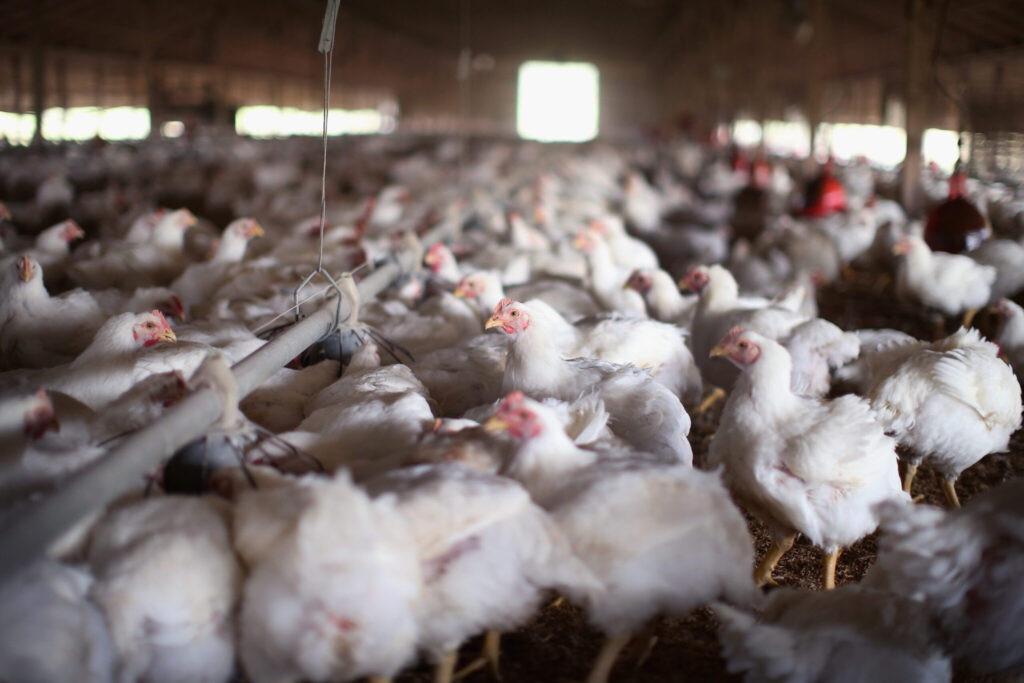Voters should look at their choices this year through a public health lens, writes Dr. Kevin Kavanagh. (Getty Images)
As our 2024 presidential election approaches there is intense focus on the economy and the economic policies of our current administration. For many families, the cost of everyday household items has risen to critical levels and renewed inflation is still of concern.?
Although the debate has focused on economic policy, I would like to put forward the case that our current economic challenges may be driven by three existential threats, those of long COVID-19, bird flu and an aging workforce due to falling birth rates. All three are public health issues and underscore the need for increasing public health funding. Two of the threats are workforce issues which can also be mitigated with a comprehensive and robust immigration policy.
Long COVID-19
A number of recent government reports have presented data on the rising incidence of chronic diseases but have been reluctant to mention the impact of long COVID. The Brookings Institute published one of the last reports regarding long COVID and the United States’ workforce. In 2022 Brookings estimated that long COVID has taken 2 million to 4 million adults out of the workforce. In April 2024, the United Kingdom’s Office of National Statistics issued a warning regarding people leaving the country’s workforce due to chronic illness. A report from the UK’s Health Foundation estimated that one in five of the UK’s working population has a work-limiting illness, an incidence which threatens the economic viability of the country. The definition of long COVID may not capture those disabled from a stroke, heart attack, diabetes or a severe infection which may still be a long-term sequel of COVID-19.

Bird flu?
Imagine alleviating skyrocketing food prices by providing tens of millions of free chickens for the United States consumer. Prices would be expected to fall. The bird flu, H5N1 virus, has done just that, only in reverse. There are fewer chickens and eggs which places upward pressure on prices.
Over the last four years, the price of eggs has nearly doubled, outpacing other staple foods. Since 2022, the United States government has paid over $850 million to offset farmer’s losses due to the bird flu pandemic from the culling of chickens, turkeys and egg-laying hens. So far over 80 million birds have been culled. Presently, the virus has infected over 150 cattle herds in 13 states. There have also been at least 13 documented poultry and dairy workers infected, but this may only be the tip of the iceberg. Of concern is that if one of these workers was also infected with seasonal influenza, the viruses could exchange genes and create a version of bird flu that would be highly infectious in humans. The bird flu outbreak is nowhere near under control and is having a profound impact on our agricultural industry.
Birth rate
The average fertility rate in the world is 2.25 births per woman. In the United States this figure is 1.62 and in Europe is 1.40. Rates lower than two will not support a growing population and a young workforce.
?
Byproducts from pesticides, plastics and forever chemicals are endocrine-disrupting chemicals and can disrupt our body’s hormones, as can biological agents, such as SARS-CoV-2 which target the high ACE2 receptor concentration in the human testes. It is the COVID-19 infection not the vaccine which poses a significant risk to fertility. All of these pressures have been implicated in an over 50% fall in sperm counts which has occurred since 1973, and has accelerated since 2000.

Public health and population
In the short term, we must support public health to slow down the spread of disease in our communities and agricultural businesses, and to mitigate human exposure to environmental and biological toxins linked to decreasing fertility rates.?
?
Propping up our workforce by creating the capacity to screen and document large numbers of immigrant workers is of utmost importance. Early this year Britain experienced a significant worker shortage which necessitated businesses to fill vacancies with migrants.
In the U.S., the? bipartisan Senate border bill of 2024 was a step in the right direction. According to FactCheck.org: “It included money to build more border barriers, to greatly expand detention facilities, and to hire more Immigration and Customs Enforcement and Border Patrol agents, asylum officers and immigration judges to reduce the years’ long backlog in cases to determine asylum eligibility.”?
The bill was supported by the union representing Border Patrol agents and the U.S. Chamber of Commerce. But for right-wing politicians, it did not go far enough. Regardless of the outcome of the election, we need a robust immigration policy which allows large numbers of workers and their families to be rapidly documented and legally cross into the U.S. Both our national security and economic health require the rapid adoption of immigration reform.
]]>